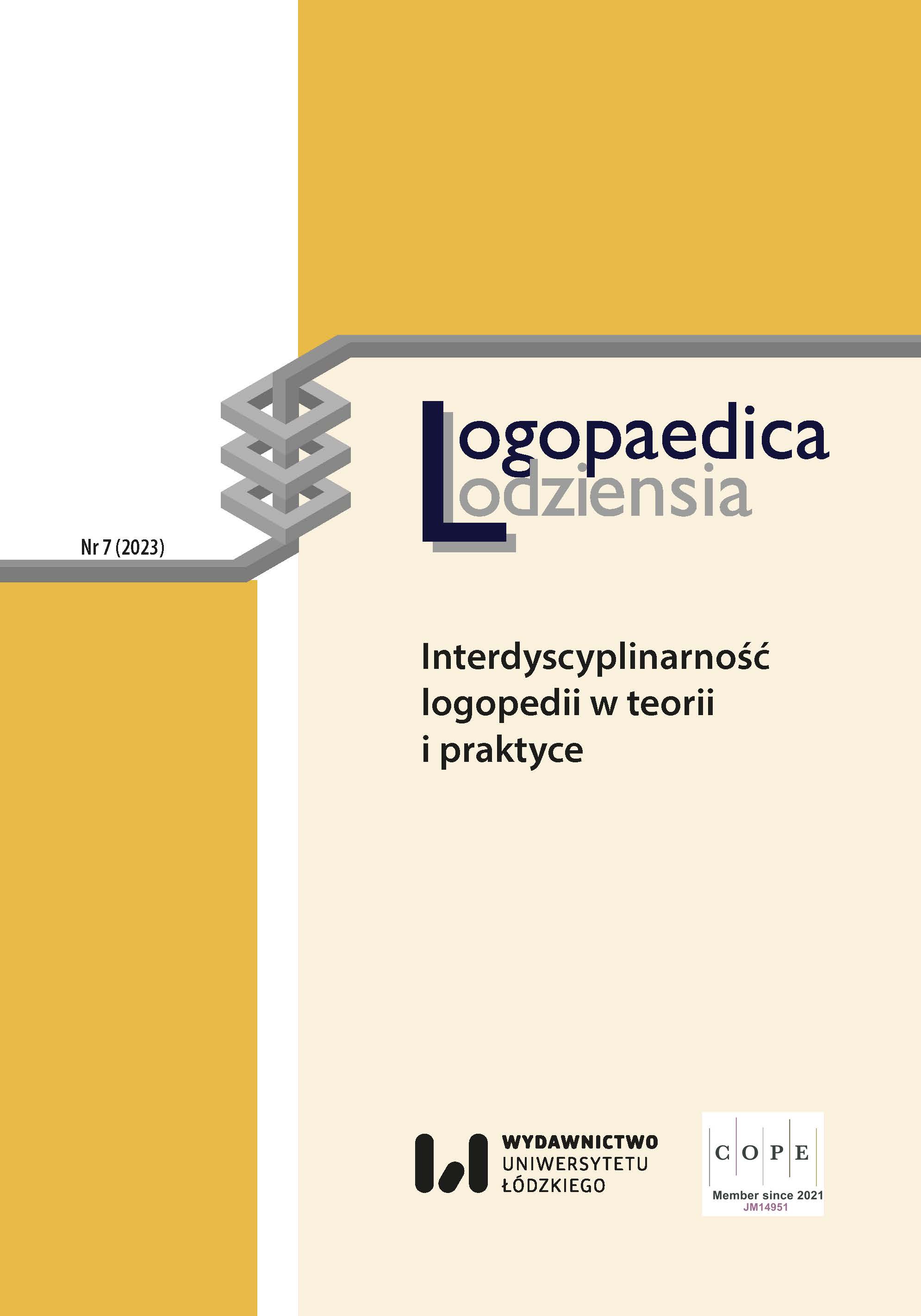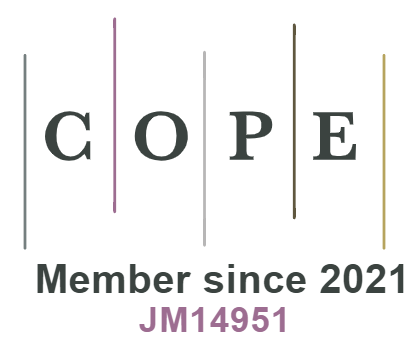Wpływ chorób endokrynologicznych, metabolicznych i choroby refluksowej na zaburzenia głosu
DOI:
https://doi.org/10.18778/2544-7238.07.10Słowa kluczowe:
głos, otyłość, cukrzyca, choroba refluksowa przełyku, choroba refluksowa krtaniowo-gardłowa, niedoczynność tarczycy, nadczynność tarczycy, zespół policystycznych jajnikówAbstrakt
Głos to podstawowe narzędzie komunikacji, na którego barwę czy jakość mogą wpływać schorzenia metaboliczne lub endokrynologiczne oraz choroba refluksowa. Otyłość to nieprawidłowe lub nadmierne nagromadzenie się tłuszczu, stanowiące zagrożenie zdrowotne. Zmiany zachodzące w organizmie z uwagi na odkładanie się tłuszczu prawdopodobnie przyczyniają się do wystąpienia „oddechowych objawów otyłości”, takich jak świszczący oddech czy duszność. Temat wpływu otyłości na głos wymaga dalszych badań. Cukrzyca to metaboliczna choroba przewlekła, w przebiegu której trzustka nie wytwarza wystarczającej ilości insuliny lub gdy organizm nie może jej skutecznie wykorzystać. Wskazuje się, iż osoby chore, ze słabą kontrolą glikemii oraz z neuropatią, cechują się istotną różnicą w ocenie głosu. Choroba refluksowa jest przewlekłym schorzeniem charakteryzującym się przemieszczaniem się kwaśnej treści żołądkowej do przełyku (GERD) lub też gardła czy krtani (LPRD). Wskazuje się, iż istnieją zmiany w jakości głosu u pacjentów zmagających się z chorobą refluksową w porównaniu z osobami zdrowymi. Niedoczynność oraz nadczynność tarczycy to schorzenia spowodowane zaburzoną produkcją hormonów przez ten gruczoł. W ich przebiegu może dojść do powiększenia tarczycy, a tym samym zwężenia strun głosowych i wystąpienia dysfonii. Temat ten wymaga dalszych badań. Zespół policystycznych jajników (PCOS) jest najczęstszym zaburzeniem hormonalnym u kobiet w wieku rozrodczym. Wyniki analizowanych badań dotyczących korelacji pomiędzy PCOS a zaburzeniami głosu nie są zgodne. Celem niniejszego artykułu jest zwrócenie uwagi i podkreślenie, jak ogromny wpływ na narząd ludzkiego głosu wywierają jednostki chorobowe, z jakimi zmaga się człowiek w XXI wieku.
Pobrania
Bibliografia
Ayazi S., Pearson J., Hashemi M., 2012, Gastroesophageal Reflux and Voice Changes Objective Assessment of Voice Quality and Impact of Antireflux Therapy, „Journal of Clinical Gastroenterology”, Vol. 46(2), s. 119–123.
Google Scholar
Aydin K., Akbulut S., Demir M.G., Demir S., Ozderya A., Temizkan S., Sargin M., 2016, Voice Characteristics Associated With Polycystic Ovary Syndrome, „The Laryngoscope”, Vol. 126(9), s. 2067–2072.
Google Scholar
Barsties B., Verfaillie R., Roy N., Maryn Y., 2013, Do body mass index and fat volume influence vocal quality, phonatory range, and aerodynamics in females?, „Codas”, Vol. 25(4), s. 310–318.
Google Scholar
Britannica, 2023, Diabetes mellitus, www.britannica.com/science/diabetes‑mellitus (dostęp: 27.04.2023).
Google Scholar
Broughton D.E., Moley K.H., 2017, Obesity and female infertility: potential mediators of obesity’s impact, „Fertility and Sterility”, Vol. 107(4), s. 840–847.
Google Scholar
Celebi S., Yelken K., Develioglu O.N., Topak M., Celik O., Ipek H.D., Kulekci M., 2013, Acoustic, perceptual and aerodynamic voice evaluation in an obese population, „The Journal of Laryngology and Otology”, Vol. 127(10), s. 987–990.
Google Scholar
Cleveland Clinic, b.r., GERD (Chronic Acid Reflux), my.clevelandclinic.org/health/diseases/17019‑gerd‑or‑acid‑reflux‑or‑heartburnoverview (dostęp: 6.12.2019).
Google Scholar
Dixon A.E., Peters U., 2018, The effect of obesity on lung function, „Expert Review of Respiratory Medicine”, Vol. 12(9), s. 755–767.
Google Scholar
Ersoz Unlu C., Karacayli C., Ocal F.C.A., 2022, Acoustic and perceptual voice parameters in subclinical and overt primary hypothyroidism, „Auris Nasus Larynx”, Vol. 49(3), s. 112–116.
Google Scholar
Eunice Kennedy Shriver National Institute of Child Health and Human Development, 2022, About Polycystic Ovary Syndrome (PCOS), www.nichd.nih.gov/health/topics/pcos/conditioninfo (dostęp: 29.09.2022).
Google Scholar
Garber J.R., Cobin R.H., Gharib H., Hennessey J.V., Klein I., Mechanick J.I., Pessah‑Pollack R., Singer P.A., 2012, Clinical practice guidelines for hypothyroidism in adults: cosponsored by the American Association of Clinical Endocrinologists and the American Thyroid Association, „Thyroid: Official Journal of the American Thyroid Association”, Vol. 22(12), s. 1200–1235.
Google Scholar
Gölaç H., Atalik G., Türkcan A.K., Yilmaz M., 2022, Disease related changes in vocal parameters of patients with type 2 diabetes mellitus, „Logopedics, Phoniatrics, Vocology”, Vol. 47(3), s. 202–208.
Google Scholar
Guadagnoli L., Simons M., McGarva J., Taft T.H., Tilburg M.A.L. van, 2022, Improving Patient Adherence to Lifestyle Changes for the Management of Gastroesophageal Reflux, „Patient Preference and Adherence”, Vol. 16(13), s. 897–909.
Google Scholar
Gugatschka M., Lichtenwagner S., Schwetz V., Lerchbaum E., Graupp M., Gerstenberger C., Kiesler K., Obermayer‑Pietsch B., Friedrich G., 2013, Subjective and Objective Vocal Parameters in Women With Polycystic Ovary Syndrome, „Journal of Voice: Official Journal of the Voice Foundation”, Vol. 27(1), s. 98–100.
Google Scholar
Hamdan A.L., Jabbour J., Nassar J., Dahouk I., Azar S.T., 2012a, Vocal characteristics in patients with type 2 diabetes mellitus, „European Archives of Oto‑Rhino‑Laryngology: Official Journal of the European Federation of Oto‑Rhino‑Laryngological Societies (EUFOS): Affiliated with the German Society for Oto‑Rhino‑Laryngology – Head and Neck Surgery”, Vol. 269(5), s. 1489–1495.
Google Scholar
Hamdan A.L., Nassar J., El‑Dahouk I., Al Zaghal Z., Jabbour J., Azar S.T., 2012b, Vocal characteristics in patients with thyroiditis, „American Journal of Otolaryngology”, Vol. 33(5), s. 600–603.
Google Scholar
Hamdan A.L., Safadi B., Chamseddine G., Kasty M., Turfe Z.A., Ziade G., 2014, Effect of weight loss on voice after bariatric surgery, „Journal of Voice: Official Journal of the Voice Foundation”, Vol. 28(5), s. 618–623.
Google Scholar
Hannoun A., Zreik T., Husseini S.T., Mahfoud L., Sibai A., Hamdan A.L., 2011, Vocal Changes in Patients With Polycystic Ovary Syndrome, „Journal of Voice: Official Journal of the Voice Foundation”, Vol. 25(4), s. 501–504.
Google Scholar
Hari Kumar K.V., Garg A., Ajai Chandra N.S., Singh S.P., Datta R., 2016, Voice and endocrinology, „Indian Journal of Endocrinology and Metabolism”, Vol. 20(5), s. 590–594.
Google Scholar
Junuzović‑Žunić L., Ibrahimagić A., Altumbabić S., 2019, Voice Characteristics in Patients with Thyroid Disorders, „The Eurasian Journal of Medicine”, Vol. 51(2), s. 101–105.
Google Scholar
Kokot F., 2004, Endokrynologia, [w:] F. Kokot (red.), Choroby wewnętrzne. Podręcznik akademicki, Warszawa: Wydawnictwo Lekarskie PZWL, s. 970–995.
Google Scholar
Lechien J.R., Finck C., Huet K., Khalife M., Fourneau A.F., Delvaux V., Piccaluga M., Harmegnies B., Saussez S., 2016, Impact of laryngopharyngeal reflux on subjective and objective voice assessments: a prospective study, „Journal of Otolaryngology – Head & Neck Surgery = Le Journal d’Oto‑Rhino‑Laryngologie et de Chirurgie Cervico‑faciale”, Vol. 45(1), s. 59–67.
Google Scholar
Mayo Clinic, b.r., Hyperthyroidism (overactive thyroid), www.mayoclinic.org/diseases‑conditions/hyperthyroidism/symptoms‑causes/syc-20373659 (dostęp: 30.11.2022).
Google Scholar
McCarty J.C., Ferguson B.J., 2014, Identifying Asthma Triggers, „Otolaryngologic Clinics of North America”, Vol. 47(1), s. 109–118.
Google Scholar
Mohammadzadeh A., Heydari E., Azizi F., 2011, Speech impairment in primary hypothyroidism, „Journal of Endocrinological Investigation”, Vol. 34(6), s. 431–433.
Google Scholar
National Heart, Lung, and Blood Institute, 2022, Overweight and Obesity. Causes and Risk Factors, www.nhlbi.nih.gov/health/overweight‑and‑obesity/causes (dostęp: 24.03.2022).
Google Scholar
National Institute of Diabetes and Digestive and Kidney Diseases, b.r., Definition & Facts for GER & GERD, www.niddk.nih.gov/health‑information/digestive‑diseases/acid‑reflux‑ger‑gerd‑adults/definition‑facts (dostęp: 15.07.2020).
Google Scholar
National Library of Medicine, 2022, Polycystic Ovarian Disease, www.ncbi.nlm.nih.gov/books/NBK459251 (dostęp: 15.11.2022).
Google Scholar
National Library of Medicine, 2023, Hypothyroidism, www.ncbi.nlm.nih.gov/books/NBK519536 (dostęp: 08.08.203).
Google Scholar
Olszewski J., Nowosielska‑Grygiel J., 2017, Nowe metody diagnostyczne oceny czynności głosu dla potrzeb foniatry i logopedy, „Logopaedica Lodziensia”, nr 1, s. 91–99.
Google Scholar
Pandeya N., Webb P.M., Sadeghi S., Green A.C., Whiteman D.C., 2010, Gastro‑oesophageal reflux symptoms and risk of oesophageal cancer: are effects of smoking, NSAIDs or acid suppressants?, „Gut”, Vol. 59(1), s. 31–38.
Google Scholar
Patel S., 2018, Polycystic ovary syndrome (PCOS), an inflammatory, systemic, lifestyle endocrinopathy, „The Journal of Steroid Biochemistry and Molecular Biology”, Vol. 182(1), s. 27–36.
Google Scholar
Rubin A.D., Sataloff R.T., 2007, Vocal fold paresis and paralysis, „Otolaryngologic Clinics of North America”, Vol. 40(5), s. 1109–1131.
Google Scholar
Sańko‑Resmer J., Wyzgał J., 2009, Endokrynologia: Choroby tarczycy, [w:] L. Pączek, K. Mucha, B. Foroncewicz (red.), Choroby wewnętrzne. Podręcznik dla studentów pielęgniarstwa i położnictwa, Warszawa: Wydawnictwo Lekarskie PZWL, s. 465–482.
Google Scholar
Sethi S., Richter J.E., 2017, Diet and gastroesophageal reflux disease: role in pathogenesis and management, „Current Opinion in Gastroenterology”, Vol. 33(2), s. 107–111.
Google Scholar
Sharma V., Cowan D.C., 2021, Obesity, Inflammation, and Severe Asthma: an Update, „Current Allergy and Asthma Reports”, Vol. 21(12), s. 46–58.
Google Scholar
Stagnaro‑Green A., 2012, Approach to the patient with postpartum thyroiditis, „The Journal of Clinical Endocrinology and Metabolism”, Vol. 97(2), s. 334–342.
Google Scholar
Stogowska E., Kamiński K.A., Ziółko B., Kowalska I., 2022, Voice changes in reproductive disorders, thyroid disorders and diabetes: a review, „Endocrine Connections”, Vol. 11(3), 210505.
Google Scholar
Sulica L., 2013, Vocal Fold Paresis: An Evolving Clinical Concept, „Current Otorhinolaryngology Reports”, No. 1, s. 158–162.
Google Scholar
Syamal M.N., Benninger M.S., 2016, Vocal fold paresis: a review of clinical presentation, differential diagnosis, and prognostic indicators, „Current Opinion in Otolaryngology & Head and Neck Surgery”, Vol. 24(3), s. 197–202.
Google Scholar
University of Pittsburgh, Department of Otolaryngology, b.r., Reflux Laryngitis, www.otolaryngology.pitt.edu/centers‑excellence/voice‑center/conditions‑we‑treat/reflux‑laryngitis (dostęp: 17.10.2022).
Google Scholar
World Health Organization, 2021, Obesity and overweight, www.who.int/news‑room/fact‑sheets/detail/obesity‑and‑overweight (dostęp: 9.06.2021).
Google Scholar
World Health Organization, 2023, Diabetes, www.who.int/news‑room/fact‑sheets/detail/diabetes (dostęp: 5.04.2023).
Google Scholar
Pobrania
Opublikowane
Wersje
- 2023-12-01 - (2)
- 2023-11-29 - (1)
Jak cytować
Numer
Dział
Licencja

Utwór dostępny jest na licencji Creative Commons Uznanie autorstwa – Użycie niekomercyjne – Bez utworów zależnych 4.0 Międzynarodowe.












